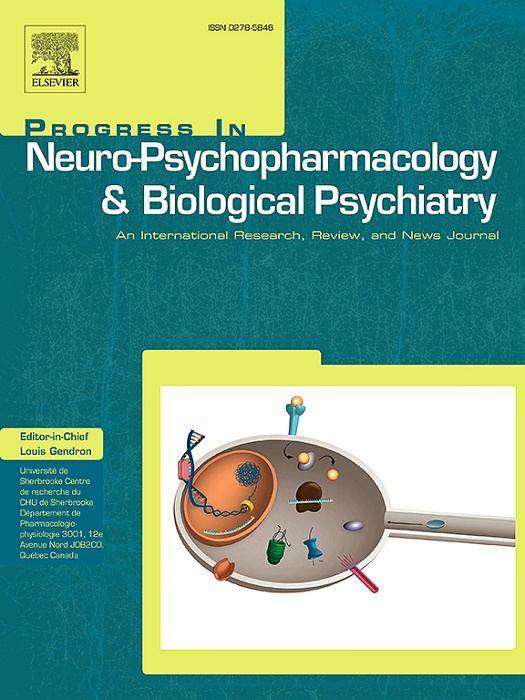Long-lasting behavioral, molecular and functional connectivity alterations after chronic THC exposure during adolescence in mice
IF 3.9
2区 医学
Q1 CLINICAL NEUROLOGY
Progress in Neuro-Psychopharmacology & Biological Psychiatry
Pub Date : 2025-06-16
DOI:10.1016/j.pnpbp.2025.111422
引用次数: 0
Abstract
Heavy and daily use of cannabis with high contents of Δ9-tetrahydrocannabinol (THC) during adolescence is associated with an increased risk of developing psychotic disorders later in life. Here, we treated mice with THC during adolescence and found that this exposure impaired social interaction and increased vulnerability to develop sensorimotor gating deficiencies comparable to those previously described among heavy cannabis consumers. Importantly, we provide evidence on long-term cortico-striatal dysconnectivity induced by exposure to THC during adolescence and its correlation with impaired social interactions occurring later in adulthood. Moreover, we have observed long-lasting molecular alterations in key elements that regulate the mesolimbic dopaminergic system, namely on the balance between dopamine D2, adenosine A2A, and cannabinoid CB1 receptors in the striatum of treated mice. Together, these findings contribute to a better understanding of the neurobiological bases of the deleterious effects associated with cannabis abuse during adolescence.
小鼠青春期慢性四氢大麻酚暴露后的长期行为、分子和功能连接改变
青少年时期每天大量使用含有高Δ9-tetrahydrocannabinol(四氢大麻酚)的大麻会增加日后患精神疾病的风险。在这里,我们在青春期用四氢大麻酚治疗小鼠,发现这种暴露损害了社会互动,增加了发展感觉运动门控缺陷的易感性,与之前在重度大麻消费者中描述的相似。重要的是,我们提供了青少年时期接触四氢大麻酚引起的长期皮质纹状体连接障碍及其与成年后社会互动受损的相关性的证据。此外,我们还观察到调节中边缘多巴胺能系统的关键元件的长期分子改变,即处理小鼠纹状体中多巴胺D2,腺苷A2A和大麻素CB1受体之间的平衡。总之,这些发现有助于更好地理解与青少年吸食大麻有关的有害影响的神经生物学基础。
本文章由计算机程序翻译,如有差异,请以英文原文为准。
求助全文
约1分钟内获得全文
求助全文
来源期刊
CiteScore
12.00
自引率
1.80%
发文量
153
审稿时长
56 days
期刊介绍:
Progress in Neuro-Psychopharmacology & Biological Psychiatry is an international and multidisciplinary journal which aims to ensure the rapid publication of authoritative reviews and research papers dealing with experimental and clinical aspects of neuro-psychopharmacology and biological psychiatry. Issues of the journal are regularly devoted wholly in or in part to a topical subject.
Progress in Neuro-Psychopharmacology & Biological Psychiatry does not publish work on the actions of biological extracts unless the pharmacological active molecular substrate and/or specific receptor binding properties of the extract compounds are elucidated.

 求助内容:
求助内容: 应助结果提醒方式:
应助结果提醒方式:


